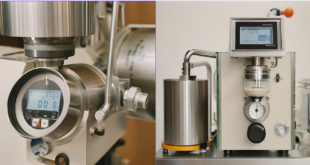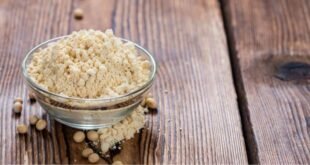Vacuum packing is a versatile packaging method that removes air from the package before sealing it, creating a vacuum environment. This process offers several benefits, including extended shelf life, preservation of product quality, and protection against external factors. Here are some examples of products that can benefit from vacuum packing:

- Vegetables:
- Vacuum packing vegetables helps to preserve freshness by slowing down the oxidation process. It also prevents the growth of microorganisms, thereby extending the shelf life of the vegetables.
- Nuts:
- Vacuum packing nuts is an effective way to protect them from exposure to air, moisture, and light, which can cause them to become rancid. Vacuum-sealed packaging helps maintain the nuts’ flavor, texture, and nutritional value.
- Grains:
- Grains, such as rice, quinoa, or lentils, can be vacuum-packed to protect them from insects, moisture, and external contaminants. This method ensures that the grains remain dry and free from spoilage.
- Coffee Beans:
- Vacuum packing is commonly used for coffee beans to preserve their freshness and flavor by preventing exposure to air. It also protects the beans from absorbing odors and moisture.
- Dried Fruits:
- Vacuum sealing is ideal for dried fruits as it helps to maintain their texture, flavor, and nutritional content. It also prevents the dried fruits from becoming overly dry or developing a stale taste.
- Cheese:
- Certain types of cheese benefit from vacuum packing to extend their shelf life. Vacuum-sealed packaging helps prevent mold growth, slows down bacterial activity, and maintains the quality of the cheese.
- Meats:
- Vacuum packing is commonly used for fresh meats, poultry, and fish to extend their shelf life by preventing exposure to air and reducing the risk of bacterial contamination. It is widely employed in the food industry for preserving the quality of meat products.
- Snack Foods:
- Various snack foods, such as chips, crackers, or popcorn, can be vacuum-packed to maintain their crispness and prevent them from becoming stale due to exposure to air.
- Spices and Herbs:
- Vacuum packing helps preserve the flavor and aroma of spices and herbs by protecting them from air and moisture. It ensures that the ingredients remain potent for an extended period.
- Frozen Foods:
- Vacuum sealing is a common method for packaging frozen fruits, vegetables, and other frozen foods. It helps prevent freezer burn and preserves the quality of the food during storage.
- Ready-to-Eat Meals:
- Vacuum packing is used for ready-to-eat meals to extend their shelf life while maintaining the taste and texture of the individual components.
When using vacuum packing, it’s important to choose appropriate packaging materials and consider the specific needs of each product to ensure optimal preservation and quality. Additionally, proper labeling and storage instructions are crucial for consumer awareness and satisfaction.
Vacuum packing spices and herbs
Vacuum packing spices and herbs is a great way to preserve their flavor, aroma, and freshness for an extended period. Here are some popular spices and herbs that can be vacuum-packed and marketed effectively:

- Dried Basil: (सूखी तुलसी)
- Vacuum packing helps preserve the vibrant flavor and aroma of dried basil, making it a convenient option for consumers who want to enhance their dishes with the essence of fresh basil.
- Dried Oregano: (सूखे अजवायन की पत्ती)
- Oregano is a versatile herb used in various cuisines. Vacuum-sealing maintains the herb’s potency, ensuring that it adds a robust flavor to dishes.
- Ground Cinnamon: (जमीन दालचीनी)
- Vacuum-packing ground cinnamon helps retain its warm and sweet aroma. This is particularly beneficial for consumers who use cinnamon in baking or as a spice for beverages.
- Dried Thyme: (अजवायन के फूल सूख)
- Thyme is a popular herb in Mediterranean and French cuisines. Vacuum sealing preserves its earthy flavor, making it a convenient option for those who want to add thyme to their dishes.
- Ground Turmeric: (पिसी हुई हल्दी)
- Turmeric is known for its earthy and slightly bitter flavor. Vacuum packing helps maintain the freshness of ground turmeric, which is commonly used in various spice blends and curry recipes.
- Cayenne Pepper: (लाल मिर्च)
- Vacuum-sealing cayenne pepper helps preserve its heat and pungency. This spice is often used to add spiciness to dishes and can be marketed to consumers who enjoy a bit of heat in their meals.
- Garlic Powder: (लहसुन चूर्ण)
- Garlic powder is a staple in many kitchens. Vacuum packing ensures that the garlic flavor remains potent, making it a convenient option for those who want to add garlic flavor without the hassle of peeling and chopping fresh garlic.
- Ground Black Pepper: (Ground Black Pepper)
- Black pepper is a widely used spice that loses its flavor when exposed to air. Vacuum-sealing keeps ground black pepper fresh, ensuring its pungent taste.
- Dried Rosemary: (सूखे दौनी)
- Rosemary has a distinctive pine-like flavor. Vacuum packing helps preserve the herb’s essential oils and flavor, making it suitable for use in various dishes.
- Ground Ginger: (अदरक)
- Ginger adds warmth and a unique flavor to both sweet and savory dishes. Vacuum-sealing ground ginger ensures its freshness and convenience for consumers.
- Paprika: (लाल शिमला मिर्च)
- Vacuum packing paprika helps maintain its vibrant color and smoky-sweet flavor. This spice is used in a variety of dishes, and freshness is crucial for its impact.
- Dried Parsley: (सूखा अजमोद)
- Vacuum-sealing dried parsley helps preserve its color and flavor. It’s a versatile herb that can be sprinkled on various dishes for added freshness.
Marketing Strategies:
- Emphasize Freshness:
- Highlight the freshness and potency of the vacuum-packed spices and herbs. Use terms like “preserved aroma” or “extended freshness.”
- Convenience:
- Market the vacuum-packed spices as a convenient solution for consumers who want to save time in the kitchen without compromising on flavor.
- Packaging Design:
- Create visually appealing packaging designs that convey the quality and uniqueness of the spices and herbs. Use clear packaging to showcase the vibrant colors of the products.
- Recipe Ideas:
- Provide recipe ideas and suggestions on how consumers can use the vacuum-packed spices and herbs to enhance their cooking.
- Educational Content:
- Share educational content on the benefits of vacuum packing for preserving spice freshness. Emphasize the impact on flavor and shelf life.
- Online Presence:
- Establish a strong online presence through e-commerce platforms and social media. Use engaging content and visuals to attract customers.
- Customer Testimonials:
- Encourage customer reviews and testimonials. Positive experiences with the freshness and convenience of your products can be powerful marketing tools.
- Limited Editions and Bundles:
- Introduce limited edition vacuum-packed spice blends or seasonal bundles to create a sense of exclusivity and encourage purchases.
- Certifications:
- Obtain relevant certifications for quality and freshness. Display these certifications prominently on your packaging to build trust with consumers.
- Collaborations:
- Consider collaborations with chefs, food bloggers, or influencers who can create content featuring your vacuum-packed spices and herbs.
 SoyaFood A Golden Bean Food Product…
SoyaFood A Golden Bean Food Product…






